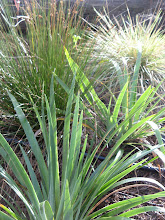Bloom

There's something so nice and humble about green flowers. And isn't the form amazing? The two green "petals" are bracts (modified leaves).
Today I had a difficult time driving home from work. I was the last to leave the Arb and the millions and millions of tiny snowflakes were attacking my windsheild. I mean, it was a real blizzard, a swirling fog of snow. The rubber on my wipers was already peeling off, but the wipers still help a little. I had to stop at Home Depot's parking lot to reasses the situation and wait, in vain, for the snowfog to let up. The power of defrost eventually kicked in and I slowly made my way to my apartment. There was a smaller truck in front of me that was swerving like crazy. I slipped a little, but my tires are only a few months old and I guess the good old truck weighs enough.
P.S. I'm still writing. I have about two chapters drafted out and I need to take it somewhere for printing so I can organize and mull it over. It's just easier while holding paper.







